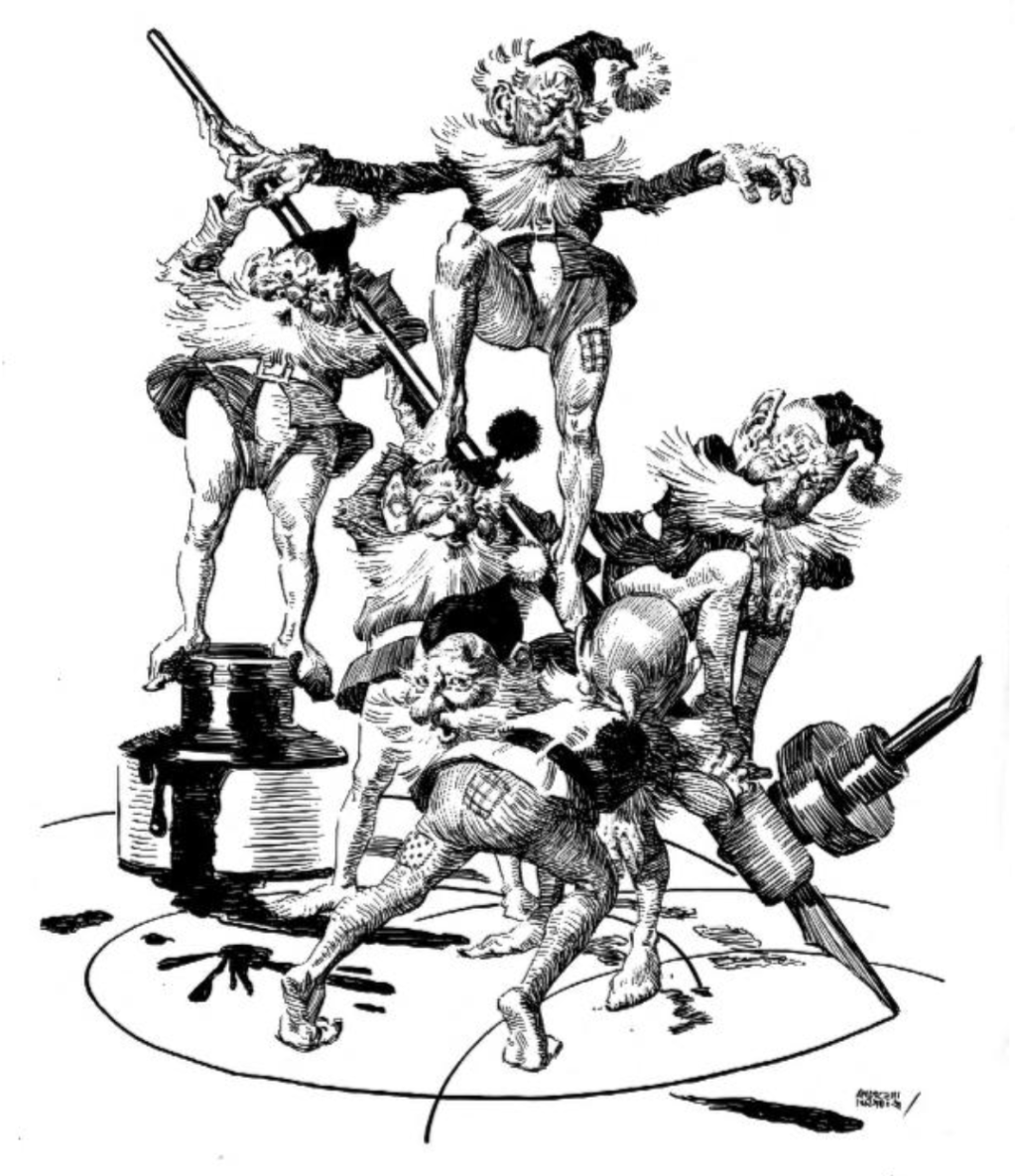
Today on the JUFSEN BOOK CLUB, we’ll start a new series, based on …
Creative Illustration by Andrew Loomis, released 1947 by its publisher Titan Books, which is a phenomenal book for any artist wanting to make headway for understanding all the nooks and crannies within the craft of not just illustration, but in general, the arts as a whole.
All credit goes to the rightful owner and author of the book, Andrew Loomis and its publisher Titan Books. This is a summation and interpretation in own words.
Part One of the book which discusses the concept of Line, has been divided into FOUR SECTIONS just to make it a little simpler for you!
꧁ Section 1 ✿ Seven Primary Functions of Line – p.25 ꧂
Section 2 ✿ Line and Symbols – p.25 to p.33
Section 3 ✿ Division and Perspective – p.34 to p.43
Section 4 ✿ Catching Attention – p.44 to p.53
Section 5 ✿ Rendering Line – p.54 to p.79
Just to get the word out there, the concepts and tools Andrew Loomis provides in Part One, alone is absolutely amazing for any artist, both the drawer and the painter. The great depth Loomis goes over, and the value that this book holds, is something you’ll hopefully not take for granted as you read it. It’s worth your time!
With that out of the way, let’s start with just a small introduction of the SEVEN PRIMARY FUNCTIONS of LINE, that’s discussed briefly in this book. There are likely more you can point out, even for outside the field of art, but these primaries are good for starting with.
They are as follows…

1 ✦ “To convey its own intrinsic beauty”
Line by itself can be beautiful and it can even show emotion. A thick line, with sharp breaks, can be connected with anger or frustration, while a fluid and smooth line can show happiness or energy.
Use line to convey emotion and a story.

(Image to left, from Brent Eviston)
2 ✦ “To divide or limit an area or space”
If you’ve ever heard of the Envelope Method in drawing, this is pretty much the same idea! You divide and limit the area within the space that you will draw your subject, so that keeping proportion becomes a piece of cake!
Use line for wrapping around your subject, making it keep proportion.
3 ✦ “To delineate a thought or symbol”
In comics especially, you’ll often see symbols that in some way or another convey an emotion or thought. The exclamation mark ! shows the emotion of surprise or to catch attention, and the question mark ? shows curiosity or to show confusion.
Use line to create symbols that convey thought or emotion.
4 ✦ “To define form by edge or contour”
You can create form by knowing all sorts of simple shapes and solids, you know, the one’s we’ve all learnt as a child. Drawing these in their correct way, makes the subject on your flat piece of paper, look all the more, 3 dimensional.
With all the geometric shapes and solids you learn to draw with time, you’ll be able to more and more, build up and construct, instead of simply tracing, whatever subject you’d like on paper or canvas.
Use line to construct your subject.

5 ✦ “To catch and direct the eye over a given course”
Doing a sketch- or storyboard of a composition, it’s all the more helpful for you to use lines for conveying where and how the viewers eye might or will move to. In comics, for example, it’s often that lines show where a person is falling or flying for example. But this function of line, can also be used in painting.
James Gurney, an incredible artist, made his own composition rule called Spokewheeling, that uses straight lines which all points to the center of interest. (For more on Spokewheeling, read more at Gurney Journey)
Use line to direct the eye.
6 ✦ “To produce a grey or tonal gradation”

Hatching, cross-hatching, dotting, scribbling and so on, are all unique ways of using line, that all in their special way convey a change in value, in the value scale. It used today by most, Comic Artists and illustrators, but the technique has a history of being used by even the Old Masters, such as Leonardo Da Vinci, Michelangelo and even Rembrandt.
Use line to convey a change in value.
7 ✦ “To create design or arrangement”
Lastly, the function of line that most painters use in their early stages of painting either from life or from imagination, is using it create a composition, and also to arrange where and how the forms of the subject will fall. Line by itself, however can also create a beautiful pattern of design, which in itself can be an artwork. This is exactly what some textile companies use.
Use line to create a composition, arrange your subject and even make design.

As you see, even a line may seem simple at first, but as for everything else, there is much more to it than you may think. Andrew Loomis goes as far as to say that “Line in its various functions has contributed as much to human progress as fire or steam”.
This may of course be something to debate over, but when it comes to the artist and for the field of art, knowing that drawing a simple line, has a function and purpose, that you can use in your expression, is something that’s really going to contribute to your progress as an artist.
Loomis hopes that from the day forward that you’ve gotten a grasp on all the sorts of functions we see in line, from little to big, curvy to straight, thick to small, will have an expression or thought behind it. In its own big or small way.
So, let’s see in the next Section, all the sorts of things line can do, that Loomis brings up in the following pages!
If there’s anything you have in mind, that you think is worth adding, please consider commenting below! Your thoughts and words are valued deeply here on JUFSEN!
As always, thank you for reading!

Leave a comment